Unraveling the Mysteries of the Moabites: Ancient History and Modern Connections. Who Are the Moabites Today? A Journey Through Time and the Lasting Legacy of an Ancient People. From Ruth to Petra: Exploring the Cultural and Religious Impact
The Moabites are an ancient nation mentioned in the Bible with a rich history and significant connections to various biblical events. In this blog post, we will explore the Moabites’ origins, their relationship with the Israelites, and their modern descendants. We aim to provide a comprehensive understanding of who the Moabites are today.
Contents
The Moabite Origin and History
The Incestuous Beginnings of Moabites and Ammonites
The Moabites and Ammonites originated from an incestuous relationship between Lot, Abraham’s nephew, and his two daughters, as detailed in the Bible (Genesis 19:30-38). The daughters, believing they were the last people on Earth after the destruction of Sodom and Gomorrah, got their father intoxicated and slept with him to preserve their family lineage. The Moabites descended from the son born to Lot’s elder daughter, Moab, while the Ammonites descended from the son born to the younger daughter, Ben-Ammi.
| Descendants of Lot | Origin |
|---|---|
| Moabites | Moab, son of Lot and his elder daughter |
| Ammonites | Ben-Ammi, son of Lot and his younger daughter |
Their Relationship with Israelites
The Moabites and Israelites shared a complex relationship throughout history. While they had familial ties through their common ancestor, Terah (the father of both Abraham and Lot), they often conflicted with each other. However, there were also instances of cooperation and intermarriage, such as the story of Ruth, a Moabite woman who married an Israelite and became an ancestor of King David.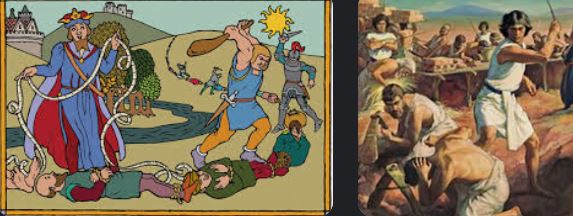
The Moabite Kingdom, Culture, and Religion
The Moabites established a kingdom east of the Dead Sea, with their capital at Dibon. They were known for their skilled craftsmanship in pottery, metalwork, and agriculture. The chief God of the Moabites was Chemosh, often referred to as an “abomination” in the Bible. The worship of Chemosh was introduced to Israel by King Solomon, who was led astray by his pagan wives.
Moabite Language Similarities with Ancient Hebrew
The Moabite language was similar to ancient Hebrew, as evidenced by inscriptions like the Mesha Stele. The differences between the two languages were minor, and it is believed that Moabites and Israelites could communicate without a translator. This close linguistic relationship further highlights the connections between these two ancient nations.
The Moabites’ Decline and Disappearance
Subjugation by the Assyrian Empire
From the eighth century BCE onward, the Moabites experienced a decline in power as they came under the tribute of the Assyrian Empire. The Assyrians, known for their military prowess and extensive empire, subjugated numerous nations, including the Moabites. This subjugation led to a decrease in Moabite autonomy and influence in the region.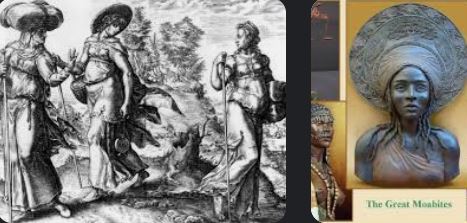
Moabite Attacks on the Kingdom of Judah
During the early 600s BCE, Moabite forces joined other regional powers in sporadic attacks on the Kingdom of Judah. This period marked the beginning of Judah’s gradual decline and eventual captivity by the Babylonian Empire. The Moabite attacks contributed to the weakening of Judah, which ultimately fell to Babylonian forces.
| Regional Forces Attacking Judah | Period |
|---|---|
| Moabites | Early 600s BCE |
Conquest by the Babylonians
In 582 BCE, only three to four years after the fall of Judah, the Babylonians conquered Moab. The conquest of Moab by the Babylonians marked the end of the Moabite kingdom as an independent entity. The Moabites, like the Israelites, were subjected to the rule of the Babylonian Empire.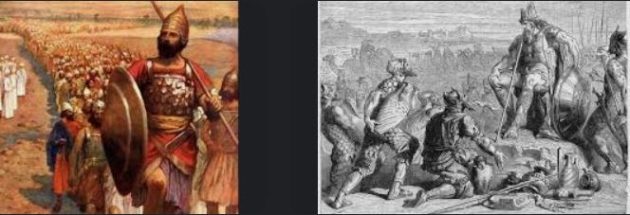
Post-Babylonian Period and the Moabites’ Disappearance
After the Babylonian conquest, the Moabites largely disappeared from history. Some Moabites may have remained in the land, as Nehemiah records that Jews who returned from captivity took Moabite wives (Nehemiah 13:23-27). However, the fate of the more significant Moabite population remains unclear.
In the following centuries, the Nabataeans settled in the former Moabite territory and ruled from Petra, initially within the border of Edom, south of Moab. The region then experienced Roman rule, followed by the back-and-forth conquests of the Crusades. Today, the territory once occupied by the Moabites is part of the Hashemite Kingdom of Jordan.
Modern Descendants of the Moabites
Moabite Territory Today: Part of the Hashemite Kingdom of Jordan
The territory once occupied by the Moabites is now part of the Hashemite Kingdom of Jordan, a modern nation located in the Middle East. This area has experienced numerous changes in governance and control over the centuries, with various empires and nations ruling the region.
| Ancient Moabite Territory | Modern-Day Territory |
|---|---|
| Moab | Hashemite Kingdom of Jordan |
Possible Connections Between Moabites and Modern Jordanians
While the Moabites largely disappeared from history after the Babylonian conquest, some researchers and historians have theorized that there may be connections between the ancient Moabites and modern Jordanians. However, concrete evidence linking the two is still being determined, and further research is needed to establish a definitive connection. It is essential to recognize that modern Jordanians are a diverse population with various ethnic backgrounds and cultural influences.
Intermarriages Between Moabites and Israelites
As mentioned earlier, Nehemiah 13:23-27 records that some Jews who returned from Babylonian captivity took Moabite wives. There may have been some intermingling between the Moabite and Israelite populations over the centuries, leading to the possibility that some modern descendants of the Moabites may be found among the Jewish people.
| Population | Intermarriages With |
|---|---|
| Jews (Post-Captivity) | Moabites |
The Moabites’ Cultural and Historical Impact on the Region
The Moabites left a lasting cultural and historical impact on the region, as evidenced by their contributions to the ancient world. The Mesha Stele, for example, is a significant artifact that sheds light on the Moabite kingdom, their language, and their relationship with the Israelites. Additionally, the Moabite language’s similarity to ancient Hebrew demonstrates a linguistic connection that has influenced the development of modern Semitic languages.
Moreover, the Moabites’ religious practices, such as the worship of Chemosh, have been documented in both biblical and archaeological sources. The discovery of the large Moabite temple in 2010, with its artifacts and altars, provides further insights into the Moabites’ religious and cultural practices.
While the Moabites may have largely disappeared from history, their cultural and historical impact on the region remains significant. It offers valuable information for understanding the ancient world and its connections to the present day.
Connections Between Moabites and Other Nations
Comparison Between Moabites and Ammonites
The Moabites and Ammonites were two closely related ancient nations, both originating from the incestuous union between Lot and his daughters, as mentioned in Genesis 19:30-38. These neighboring nations shared similarities and connections, such as geographic proximity, Semitic language, and cultural practices. However, they also had their differences, including separate kingdoms and distinct deities.
| Moabites | Ammonites |
|---|---|
| Originated from Lot’s elder daughter | Originated from Lot’s younger daughter |
| Kingdom of Moab | Kingdom of Ammon |
| Worshiped Chemosh | Worshiped Milcom and Molech |
Relationship with the Ancient Edomites
Another ancient nation with connections to the Moabites was the Edomites, who were descendants of Esau, Jacob’s twin brother. The Edomites inhabited the region south of Moab, with the Arnon River acting as a natural boundary between the two territories. The Moabites and Edomites occasionally formed alliances against common enemies, such as when they joined forces with the Ammonites against the Israelites in 2 Chronicles 20:1-2. However, they also had conflicts, as documented in historical records and biblical accounts.
Influence on Nabataean Culture and the City of Petra
The Nabataeans, a nomadic Arab people, were greatly influenced by the Moabites, Ammonites, and Edomites, among other ancient nations. The Nabataeans established a powerful kingdom with Petra as its capital. Petra, famous for its rock-cut architecture, was a significant center of trade and commerce. The Nabataeans inherited many cultural aspects from their predecessors, including the Moabites, such as religious practices, language, and artistic styles.
| Nabataean Influence | Source Nation |
|---|---|
| Religious Practices | Moabites, Ammonites, and Edomites |
| Language | Moabites and other Semitic languages |
| Artistic Styles | Moabites, Edomites, and other regional influences |
Through these connections, the Moabites left a lasting impact on the culture and history of the region, influencing various nations and peoples that followed them.
The Moabite Legacy in Religion and Literature
The Story of Ruth, the Moabite Woman Who Became an Ancestor of King David
One of the most notable stories involving the Moabites is that of Ruth, a Moabite woman who played a crucial role in the lineage of King David and, subsequently, Jesus Christ. Ruth’s tale, found in the Book of Ruth in the Hebrew Bible and Old Testament, is a testament to her loyalty, faith, and perseverance. After the death of her husband, Ruth chose to follow her Israelite mother-in-law, Naomi, back to Bethlehem. There, Ruth remarried Boaz, an Israelite, and became the great-grandmother of King David. Ruth’s story has been celebrated for centuries as an example of devotion and selflessness, transcending cultural and ethnic boundaries.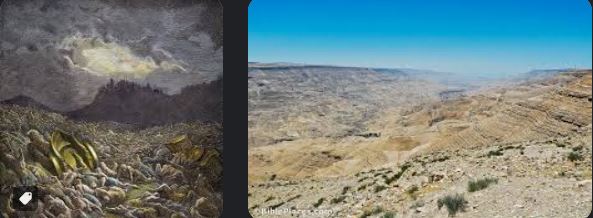
Moabite Symbolism in the Bible
The Moabites feature prominently in the Bible as both allies and adversaries of the Israelites. They are often symbolically represented as enemies of God’s people, with various biblical passages warning Israelites against following Moabite practices or worshiping their deities. However, the Moabites also serve as a reminder that God’s grace extends to all nations, as demonstrated by Ruth’s inclusion in King David’s and Jesus Christ’s lineage.
| Moabite Symbolism | Biblical Significance |
|---|---|
| Enemies of Israel | Warnings against following Moabite practices |
| Ruth the Moabite | God’s grace extending to all nations |
The Role of Moabites in Mormon History and the Naming of Moab, Utah
The Moabites have also left a mark on Mormon history and the establishment of Moab, Utah. In the early days of the Latter-day Saint movement, the Book of Mormon references the “Mulekites,” who were believed to be descendants of the Moabites. The Mulekites later merged with another group, the Nephites, becoming part of the larger narrative of the Book of Mormon.
In the 19th century, when Mormon pioneers were settling the American West, they established a town in Utah named “Moab” in honor of the ancient Moabites. Today, Moab, Utah, is a thriving community and a popular tourist destination, famous for its stunning natural beauty and outdoor recreational opportunities. Through this unique connection, the legacy of the Moabites continues to resonate in the modern era.
Conclusion
This article delves into the history and legacy of the Moabites, who once inhabited the land east of the Dead Sea. We have explored their origins, rise to prominence, and eventual decline and disappearance. Additionally, we have examined the possible connections between the Moabites and modern Jordanians and their relationships with other ancient nations. Finally, we have discussed the Moabite legacy in religion and literature, highlighting Ruth’s story and the Moabites’ influence on the Bible and Mormon history.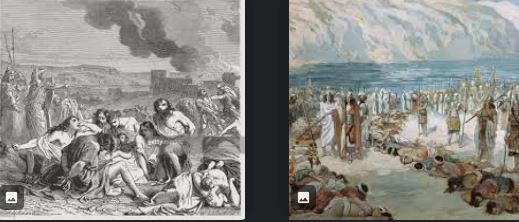
The Moabites hold a significant place in history, providing valuable insights into the complex tapestry of the ancient Near East. Their enduring impact on religion, culture, and historical narratives encourages further exploration and research into the Moabite people and their descendants today.
Read Also HERE: Were The Moabites Black?

Marta Savova is a journalist, health, technolgy and science writer. With over 20 years of experience in the field, she has published numerous research papers and articles and has a passion for sharing his knowledge with others. He is a regular contributor to several media.
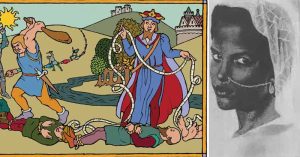
I read somewhere that additional ancient inscriptions were discovered in Moabite territory, which shed more light on their language and culture. Has anyone else come across this information?
I recently visited some of the Moabite archaeological sites in Jordan, and it’s fascinating to see how their architectural styles and artifacts have influenced later civilizations in the region.
It’s worth noting that some biblical scholars argue for a more nuanced understanding of the Moabites’ role in the Bible, suggesting that their portrayal may have been influenced by the political context of the time.
I attended a lecture on the Moabites’ influence on the Nabataean culture, specifically in the development of the city of Petra. It’s incredible how interconnected these ancient civilizations were!
I’ve always loved the story of Ruth and her unwavering loyalty to Naomi. It’s a great example of how individuals can bridge cultural divides and create lasting bonds.